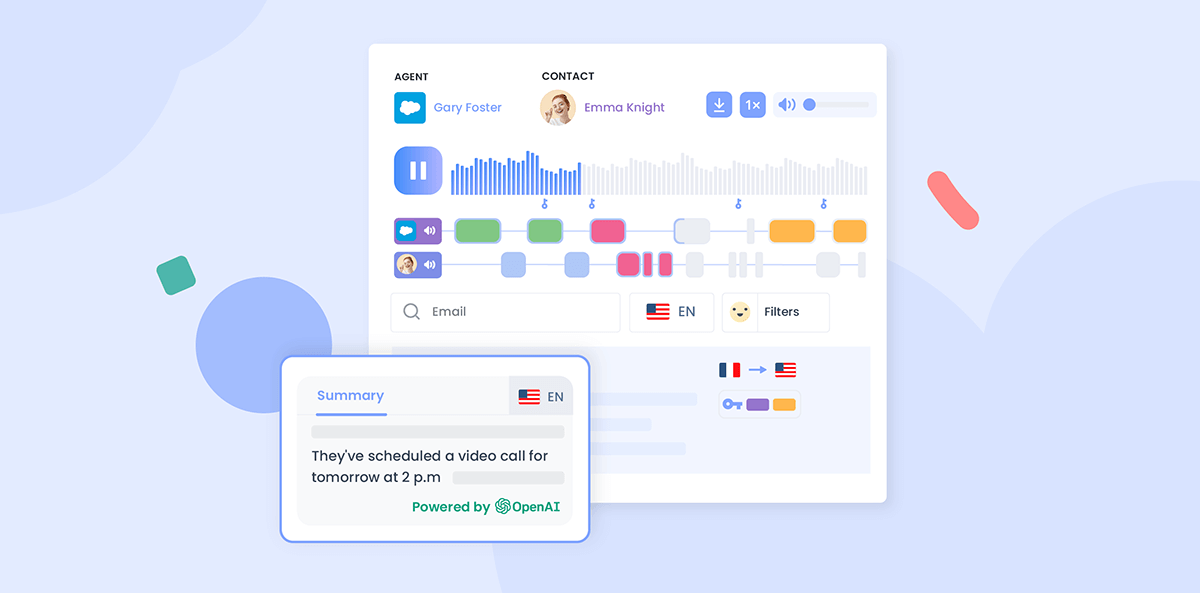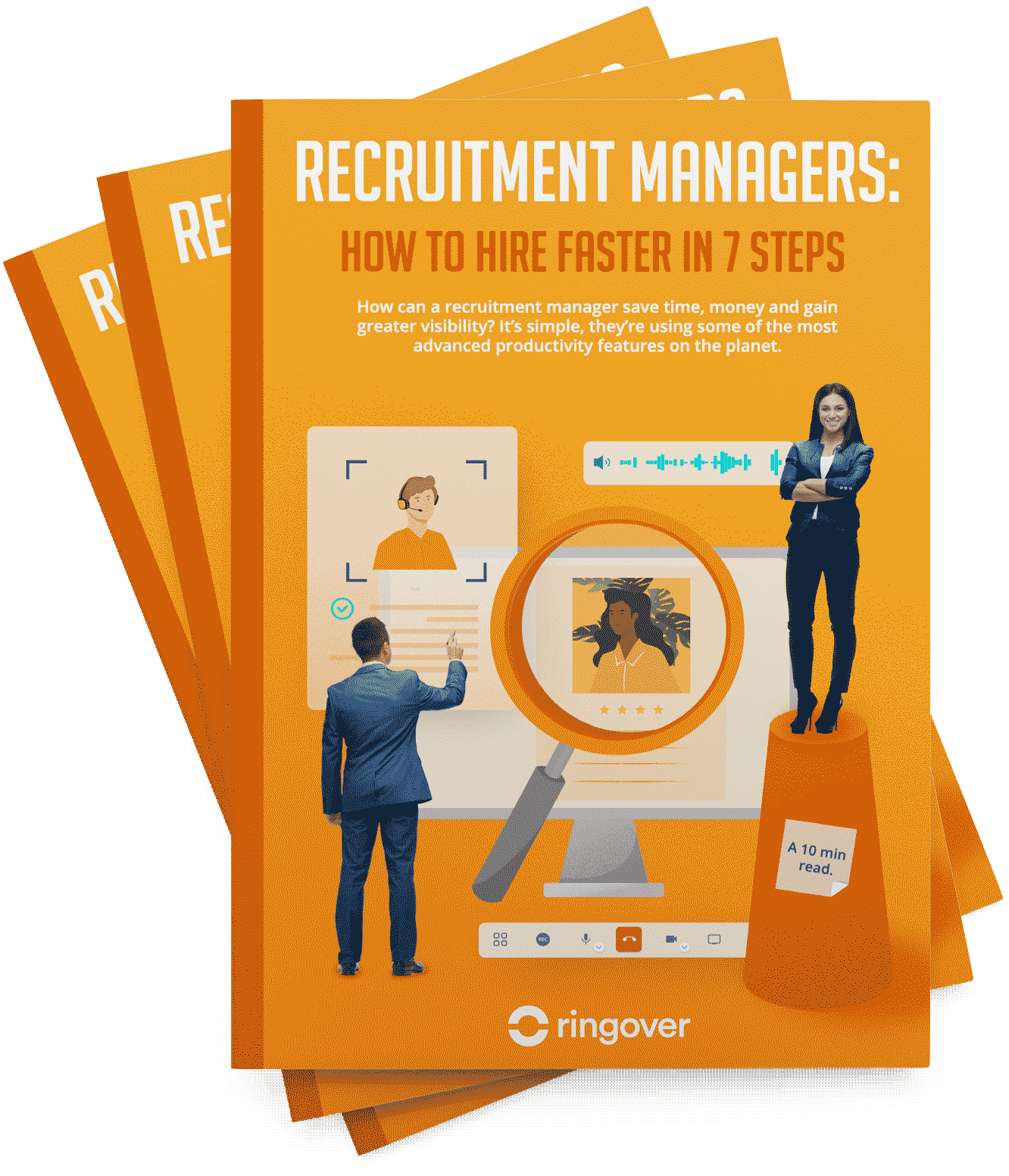Summary
What is Connected Recruiting?
Connected recruiting is a recruitment strategy that leverages technology and social platforms to build relationships and connections with potential candidates. It aims to attract, engage and convert passive candidates by providing value, establishing trust, and nurturing relationships over time.
The main goal of connected recruiting is to build and maintain a pipeline of qualified candidates that can be tapped into when hiring needs arise. Instead of only reaching out when there are open roles, connected recruiting focuses on ongoing engagement and relationship-building with talent communities.
This approach represents a shift away from traditional transactional recruiting tactics. Rather than blasting out job posts and hoping for applicants, connected recruiting relies on establishing authentic connections. Recruiters become talent advisors, providing insights, resources and opportunities to guide candidates' careers.
Connected Recruiting Phases
Connected recruiting typically involves three main phases:
1. Attract Phase
The attract phase focuses on getting qualified candidates interested in your company and job openings. This may involve inbound marketing tactics like blogging, search engine optimization, and social media to draw candidates in. You want to get your employer brand in front of passive candidates and build awareness.
The first phase of connected recruiting is attracting qualified candidates to apply for open roles. This involves several key strategies:
2. Building Talent Pools
Maintaining an ongoing database of potential candidates allows recruiters to quickly identify qualified applicants when new positions open up. Talent pools can be built through various methods:
- Employee referrals - Encourage current employees to refer friends, former colleagues, etc. who may be interested in opportunities. Many companies offer referral bonuses.
- Passive candidates - Identify and build relationships with professionals who aren't actively job searching but may be open to a new role. Connect with them on LinkedIn or at industry events.
- Previous applicants - Keep records of applicants who weren't the right fit for past roles but may be suitable for future openings.
- Social media followers - Convert interested followers on company social media channels into talent pool members.
3. Social Recruiting
Leveraging social media platforms like LinkedIn, Twitter, and Facebook to source candidates. Social recruiting tactics include:
- Posting job openings to your company's social channels and employee networks.
- Searching for and connecting with passive candidates based on skills, experience, education, etc.
- Joining industry-specific groups and forums to engage with potential applicants.
- Advertising open positions through social platforms' paid options.
4. Referral Programs
Referral programs incentivize existing employees to recommend candidates from their personal and professional networks. This helps companies tap into new talent pools. Tactics include:
- Offering a referral bonus when a referred candidate gets hired.
- Recognizing employees who make high-quality referrals.
- Making it easy for employees to submit referrals through an online portal.
- Communicating open roles and needs to employees.
- Requiring referred candidates to mention the referral in their application.
5. Engage Phase

Once candidates are attracted, the next phase is engaging them by providing relevant, helpful information. This could include email campaigns, nurture tracks, or chatbots to start a relationship. The goal is to turn interested visitors into leads by capturing contact info and learning about their needs.
During this phase, it's highly useful to have a business phone system on hand. A VoIP phone goes far beyond simple voice calls and videoconferences, providing a large range of features like call transcription, call recording, call whisper to support call coaching, and more. Plus, a wide variety of communication channels and analytics provides all the tools necessary to deploy an omnichannel communication strategy. With software such as Ringover at their fingertips, recruiters will be able to seamlessly pick up conversations with candidates and engage them via their preferred channels.
Besides a virtual phone system, here are the other actions and tools that support the engage phase.
- Candidate relationship management - Maintain ongoing communication with candidates through your talent network. Send them valuable content, share company updates, and continue the conversation. A CRM like Salesforce, Hubspot, RecruitCRM, or Zoho is especially helpful for this phase. Plus, if you have Ringover as your IP telephony solution, you'll also be able to integrate it with the CRM. This type of integration helps staffing agents increase efficiency because features like click-to-call and CTI screen pop will be available within the CRM interface.
- Nurture talent community - Build a talent community of prospective candidates by sharing content and interacting on social media. Engage with them regularly so they remain interested in opportunities.
- Candidate experience - Ensure a positive experience for candidates during the hiring process through clear communication, providing updates, and valuing their time.
- Talent pooling - Identify and build relationships with qualified candidates even when there are no current openings. That way, you already have a pool of talent to tap into when you need to fill roles.
- Events & networking - Host or attend events and networking opportunities to meet prospective candidates in person. This allows for more meaningful relationship building.
The engage phase is critical for maintaining ongoing relationships with candidates and keeping them engaged, rather than just contacting them when you need to fill a role. This nurtures your talent pipeline and creates advocates for your employer brand.
6. Convert Phase
Finally, the convert phase is about turning promising leads into applicants and hires. Recruiters directly interact with leads at this point through email, phone screens, interviews, and more. The aim is to move quality candidates through the hiring process and convert them into employees. This requires maintaining engagement and excitement about the role.
Some key actions in the convert phase include:
- Send personalized outreach to high potential candidates, inviting them to apply. Provide details on why they're a great fit and what excites you about their experience.
- Make applying easy with a user-friendly online application. Ensure a smooth and mobile-friendly application experience.
- Follow up promptly when candidates apply. Let them know the next steps and keep them warm through the interview stages.
- Give candidates an inside look at your company culture through employee testimonials, photos, videos, etc. Help them visualize life at your company.
- Offer support through the onboarding process. Assign new hires mentors, provide training, and check-in frequently in their first months.
- Collect feedback on the candidate experience. Ask for suggestions to improve your hiring and onboarding processes.
- Build relationships that last beyond a single hire. Stay connected with new hires and maintain your talent community for future openings.
The convert phase is all about guiding candidates over the finish line to become fully integrated members of your team. With a thoughtful conversion process, you can ensure great candidate experiences that strengthen your employer brand.
Benefits of Connected Recruiting
Improved Candidate Experience
With connected recruiting, candidates can engage with the company and hiring managers through their preferred channels, whether that's social media, text messaging, email, or chatbots. This leads to a more positive and personalized experience for candidates. They feel valued rather than treated like a number.
Lower Cost Per Hire
Though you may have assumed the long-term engagement required for connected recruiting would have resulted in a high cost-per-hire, new technologies keep the expense under control. Plus, if you have an existing pool of nurtured candidates, recruiters have a significant resource readily available to them. Rather than paying for job board posts and agency fees, companies can connect with passive candidates directly. This leads to faster, more efficient hiring with lower associated costs.
Improved Diversity
With connected recruiting, companies can reach a much broader and more diverse talent pool rather than just relying on resumes submitted to job postings. By engaging candidates through multiple channels and showcasing the company culture, there are more opportunities to attract candidates from all backgrounds that may not have applied otherwise. This supports diversity and inclusion efforts. Studies show that diverse teams perform better, so improving diversity leads to better business results.
Implementing Connected Recruiting
Implementing a connected recruiting strategy requires focus in three key areas: technology, processes, and team structure.
Technology
The right technology is essential for enabling a seamless connected recruiting experience. This includes:
- VoIP software to make candidate outreach easier and more effective. This technology includes video interviewing and screening tools to engage candidates remotely, analytics to track sourcing channels and optimize your strategy, and more.
- Integration between the ATS, CRM, and cloud VoIP system, allowing for a unified candidate experience.
- Marketing automation software to nurture candidates through personalized, automated campaigns.
Processes
Connected recruiting relies on building relationships over time through targeted outreach and engagement. Key process elements include:
- Developing ideal candidate personas to guide your sourcing efforts. Identify their demographics, behaviors, interests, and preferred platforms.
- Mapping the candidate journey from first touchpoint to hire. Look for ways to provide value during each stage.
- Creating a cadence of relevant, personalized content and outreach campaigns tailored to candidates based on where they are in the process.
- Leveraging two-way engagement on social media and talent communities to attract and nurture passive candidates.
Team Structure
The team model should support relationship-based recruiting:
- Dedicated sourcers to identify and engage talent on an ongoing basis, not just for open roles.
- Recruiting coordinators to manage candidate nurture streams and scheduling.
- Recruiters focused on building connections with prospects and guiding them through the hiring process.
- Collaboration between recruiters, hiring managers, and marketing to attract candidates.
With the right technology, strategic processes, and a team aligned on connecting with talent, you can make your recruiting efforts more effective through ongoing relationships.
Connected Recruiting FAQ
What is a connected recruiting strategy?
A connected recruiting strategy utilizes technology and social platforms to build relationships and networks with both active and passive candidates. The goal is to create talent communities and nurture ongoing connections, so when hiring needs arise, the recruiter already has established relationships with potential candidates to tap into.
How does remote recruiting work?
Remote recruiting works mainly via digital methods, as social media and other digital communication tools make it easy to build connections regardless of geographic barriers. Remote recruiters can attract talent through their online presence and use technology to screen, interview, and onboard candidates seamlessly. Throughout this process, recruiters and staffing agents keep the candidate experience top-of-mind to ensure the candidate develops a strong relationship with their company and a positive impression of their employer brand.
How can you effectively connect with recruiters?
The best ways to connect with recruiters include:
- Maintaining complete and optimized social media profiles so recruiters can find you.
- Interacting with recruiters on LinkedIn by liking, commenting on, and sharing content.
- Joining relevant groups and communities in your industry where both recruiters and candidates participate.
- Following recruiter and company accounts on social platforms to stay aware of job openings and opportunities.
- Attending virtual recruiting events and networking to make direct connections.
- Proactively reaching out to recruiters through social media messaging or email when you see an opening that interests you.
The key is being proactive, visible, and engaged on the platforms recruiters use daily for connected recruiting efforts. This increases your chances of connecting and being top of mind.
Bibliography
- https://www.bullhorn.com/
- https://recruitcrm.io/
- https://loxo.co/
Published on March 28, 2024.


